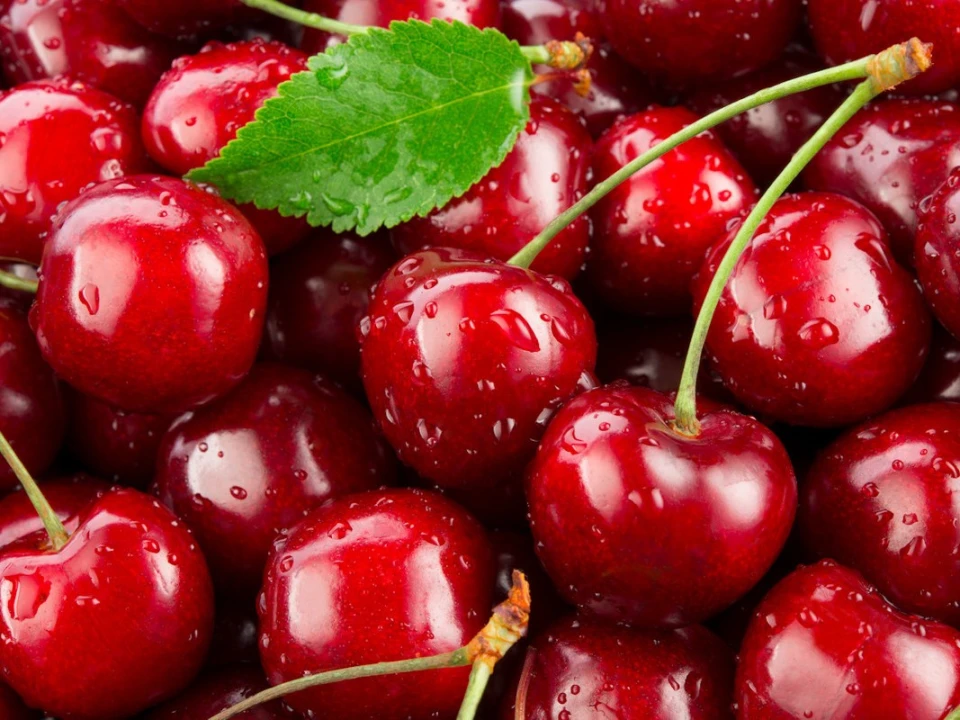Italy is renowned for its rich agricultural heritage, and cherries hold a special place in this tradition. From the sun-drenched hills of Sicily to the fertile plains of Emilia-Romagna, Italy's cherry varieties are celebrated not only for their taste but also for their deep cultural significance. There are 18 officially recognized specialties.
Whether eaten fresh, preserved, or used in desserts, Italian cherries come in a variety of shapes, sizes, and flavors and reflect the diverse climates and landscapes of the country. Let’s explore some of the most popular and historically important types.
1. Visciole (Sour Cherries)
Visciole are among the most traditional cherry varieties in Italy. These sour cherries are particularly common in central Italy, especially in regions like Lazio and Umbria. Smaller than sweet cherries, visciole have a deep red color and a tart, almost tangy taste. They are primarily used in preserves, jams, and liqueurs, most famously in the creation of “Cerasum”, a sweet cherry liqueur.
The best visciole come from the Ceraso Valley in Lazio, where the cherries are cultivated using age-old techniques. These cherries have a vibrant flavor that balances the sweetness of syrup or alcohol, making them ideal for culinary creations that require a bit of acidity.
2. Duroni (Sweet Cherries)
Duroni are large, sweet cherries that are widely grown in northern Italy, particularly in regions like Emilia-Romagna, Piedmont, and Trentino-Alto Adige. These cherries are often characterized by their shiny, dark red to black skin and their sweet, juicy flesh. The fruit is perfect for fresh consumption, but they are also used in pies, cakes, and tarts.
A standout among the duroni is the "Ferrovia" cherry, which is especially popular in the region of Puglia. The Ferrovia cherry is large, heart-shaped, and rich in flavor. It has a firm texture, which makes it ideal for transport, and it is harvested early in the season, around late May to early June.
3. Marasche (Sour Cherries for Liquor)
The Marasca cherry is another variety that belongs to the sour cherry family. Particularly associated with the regions of Veneto, Friuli Venezia Giulia, and parts of southern Italy, Marasche are small, dark cherries that are often used to produce the famous “Maraschino liqueur.”
The Marasca cherry’s flavor is both tart and slightly bitter, which makes it ideal for distillation. The liqueur made from Marasche cherries has a smooth, refined taste, and the cherries themselves can also be preserved in syrup, offering a unique treat for dessert enthusiasts.
4. Bigarreau (Sweet Cherries)
Bigarreau cherries are another popular sweet variety that is mostly grown in the regions of Emilia-Romagna and Veneto. The cherries are medium to large-sized, with a firm, crunchy texture. They are typically red to dark red in color and have a sweet, mildly tangy flavor that makes them a favorite for eating fresh.
One of the standout Bigarreau varieties is the “Burlat” cherry. Known for its deep red color and rich, sweet flavor, the Burlat cherry is often used in Italian cherry tarts, pies, and preserves. This variety is also known for its impressive shelf life and resistance to damage, making it one of the most widely distributed cherries in Italian markets.
5. Fiore di Maggio (May Blossom Cherries)
As the name suggests, Fiore di Maggio cherries are typically harvested in May, marking the start of the cherry season in Italy. These cherries are small, delicate, and usually a vibrant red. Their flavor is a perfect balance of sweetness and slight acidity, and they are often considered a delicacy in both Italy and abroad.
Although small, the Fiore di Maggio cherries are incredibly fragrant and flavorful, making them a popular choice for desserts like fruit tarts, cakes, and gelato. In particular, they are often incorporated into seasonal pastries and cakes, where their bright color and juicy texture add a fresh dimension to the dessert.
6. Ciliegie di Nera (Black Cherries)
As the name implies, Ciliegie di Nera cherries are a deep, dark purple-black color. These cherries are highly prized for their rich flavor, which is both sweet and robust, with just a touch of bitterness. They are often used in preserves, sauces, and jams, as well as in savory dishes where their bold flavor can stand out.
In Italy, Ciliegie di Nera cherries are mostly grown in the regions of Emilia-Romagna, Lazio, and Campania. They are harvested in late June, just in time for summer feasts and family gatherings. The cherries are often preserved in syrup, which helps intensify their unique flavor.
7. Ciliegie della Val di Non (Non Valley Cherries)
The Ciliegie della Val di Non, grown in the Trentino-Alto Adige region, are renowned for their quality and taste. These cherries are grown in the valley of Non, a region known for its fertile land and favorable climate. The variety is particularly notable for its large size, dark red color, and exceptionally sweet taste. The cherries from Val di Non are usually picked in early June and are sought after for fresh consumption, as well as for use in various regional desserts and jams.
The region is so famous for its cherries that it has been awarded a PGI (Protected Geographical Indication) status, ensuring that only cherries grown in this specific area can be marketed under this name. These cherries have become a symbol of quality, and their production is tightly regulated to maintain high standards.
8. Cherry Varieties for Different Regions
Each region in Italy boasts its own unique cherry varieties, with different harvest periods, flavors, and uses. Some regions, like Emilia-Romagna and Veneto, are known for their sweet, large cherries that are perfect for eating fresh, while other areas like Lazio and Campania specialize in sour cherries that are ideal for preservation and making liqueurs.
In addition, there are other lesser-known varieties, like Ferrovia from Puglia, Gioia from Calabria, and Regina from southern Tuscany. These cherries add to Italy’s diverse cherry landscape, showcasing the country's deep agricultural history and the variety of flavors that can be found across its many regions.



